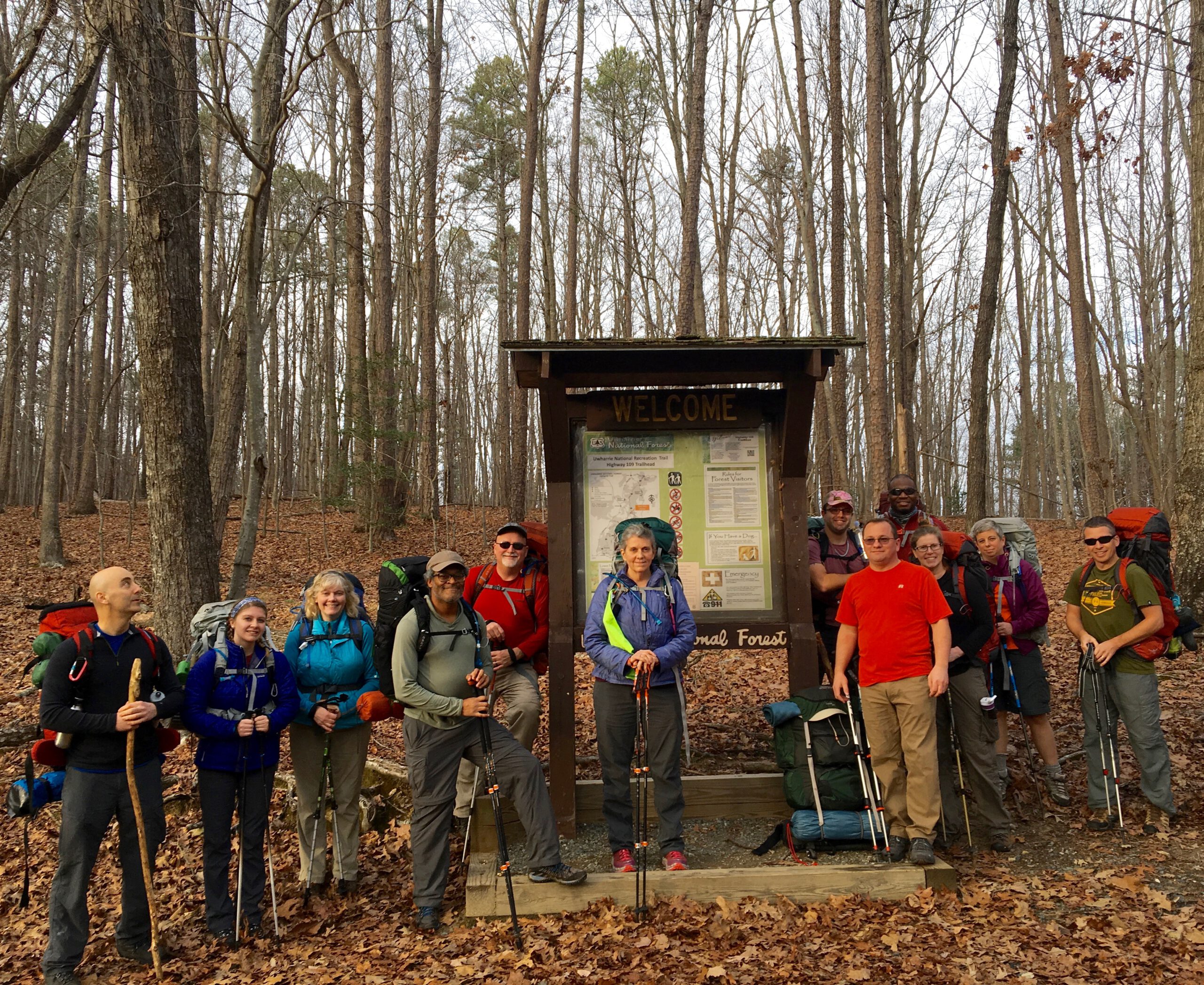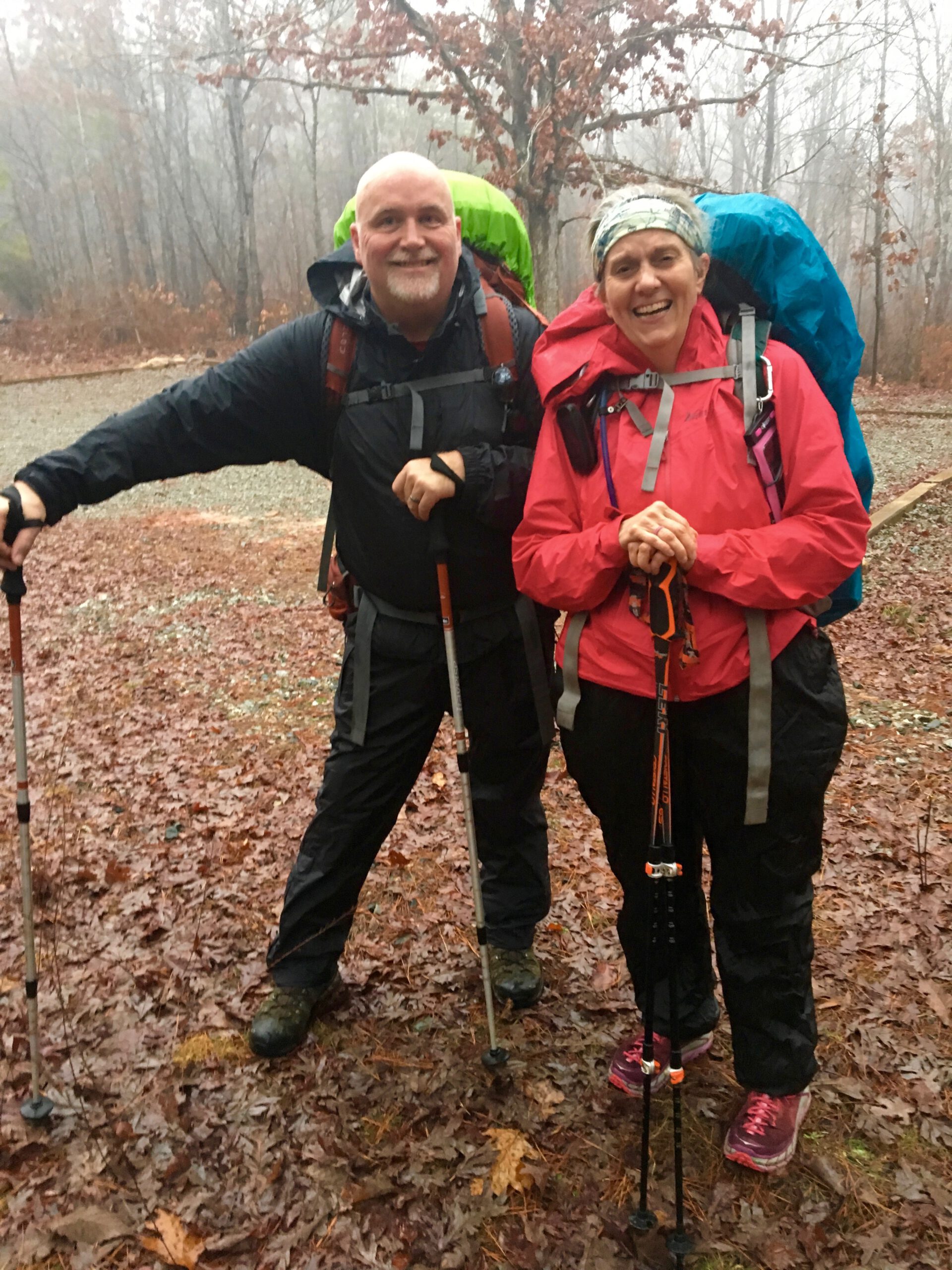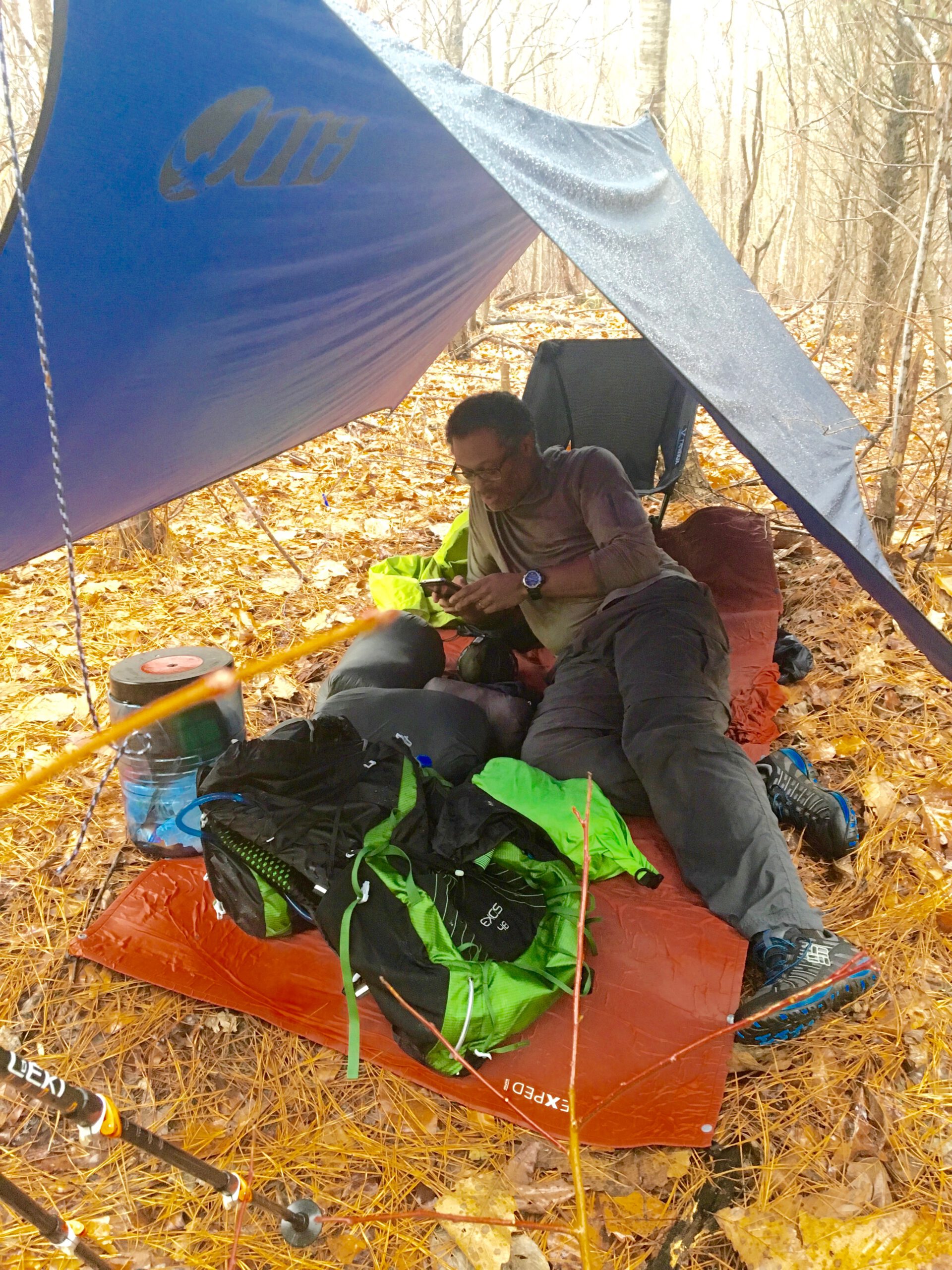
The forecast for our weekend backpack trip to the Uwharrie Mountains last weekend: rain early Friday, clearing in the afternoon, returning mid-day Saturday and staying through Sunday. Rain, possibly heavy at times.
Of the 16 people who signed up for the trip, not one canceled because of the forecast, a forecast that pretty much came to be. We were assured of getting wet, possibly while setting up camp. Building a fire likely was out of the question, meaning with the sparse daylight of winter we’d be spending more than half the trip in our tents. Hot meals — and possibly even morning coffee! — would be a challenge.
Yet no one canceled? Why did 16 backpackers, knowing the forecast, forge ahead anyway?
The appeal, the beauty, of backpacking is underscored when conditions are challenging.

Backpacking is about being self contained: essentially, you are toting a life-support system — food, shelter, clothing — on your back. Everything you need whittled to 30 (or so) pounds. When conditions are ideal — warm, dry — you can get away with sloppy preparation. You can forget your rainfly, you can space out your rain suit, you can space out extra clothes. On trips like our Uwharries excursion, you must be focused and on top of your game.
Take that rainfly. Minus this impervious cover, two- and three-season tents are worthless. The fly is not only functional, keeping the rain out, it’s also the home-bound equivalent of a tin roof, reminding us of our close connection to nature, in a comfortable, protected way.
The rain suit — jacket and pants — lets you appreciate your connection to nature all the more. The trick with most rain gear is that if the temperature is much above 60, you’re likely to get wetter from sweatiness than from the elements. (Clothing manufacturers are making progress with breathable rain-proof gear, but aren’t quite there yet.) Still, in winter rain gear is indispensable: get wet when the temps are in the 50s or lower and hypothermia becomes a serious threat. Esthetically, there is no better outdoor experience than walking the woods, and staying dry, in a light rain. (A rain suit does double duty in winter, serving as insulation from the cold.)
Then there’s that extended tent time. Twelve hours in a tent isn’t unusual for winter backpacking: it’s dark by 6 p.m., doesn’t start getting light again until 7 or so. Think about that: more than 12 hours, all to yourself. How often does that happen in the world outside the outdoors? Bring a good book, load up on podcasts, catch up on your journal. Also be sure to bring a good lamp (a Luci or Goal Zero Light-A-Life Mini), a good pillow, and a really good sleeping-pad-cum-couch. If you’re comfortable, your 12 hours of me-time can be most therapeutic.
Need more convincing of winter’s allure?
- You know that aromatic aura that surrounds a body after a 10-hour day on the trail in 80-degree heat (let alone after four or five days)? Doesn’t happen in winter. You can can even stop, with confidence, for a sit-down meal on the drive home.
- Ever share a five-person shelter with 10 other people on a spring or fall weekend? In winter, you often have the shelter to your lonesome.
- Bugs. No bugs in winter.
- Snakes, ditto.
- Pesky critters. You should still hang your food in winter, but it’s at less risk of being messed with in cold weather. (Especially true of groggy bears, if that’s a concern.)
Pay attention to the forecast, make sure you have the gear for the conditions, and you may discover a new favorite season for backcountry escapes.

